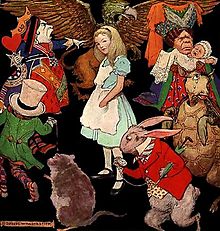An individual may ask what characteristics make up a “classic” when it comes to literature and the usual response would be the age of the book. A classic can be a novel that has been around for several decades and is still being read by both children and adults today. In fact, a classic tale can become immortalized as it is passed down through generations of readers as long as people are willing to keep the books alive when reading them to their children. Considering classic literature is very outdated, there are several occasions when the values in the stories are quite different from contemporary ones. Moreover, the language and writing style become a lot more difficult to comprehend over time, but fortunately some classics have been recreated in modern English, so that readers can understand according to how they speak today. There are also different ways the characters behave and talk in society. In other words, a classic can serve as representation of the time period it was written. However, despite the many changes throughout time, a classic always maintains consistent morals and a unique story for readers of any age and time period to enjoy for an eternity.
A book can be deemed a “classic” merely by how memorable it is to society. Time does not necessarily limit the “classic” label, but it does strengthen the credibility when someone picks up a book that is several years old. One could probably argue that it is the book’s popularity and the large sum of people who know of its existence and contents in the story that immediately makes the book a classic. Perhaps it is a little pretentious to consider a book a classic after being out for not even a decade, but it is really up to time to decide if a book should be considered a classic. If future generations are able to remember books of today then these contemporary books should indeed be considered classics, but we have to let time decide the future label of a book. Both adult and children’s books can both be evaluated equally in terms of being classified as classics; both adult and children’s literature have their fair share of renowned stories and, in most cases, are books that are kept alive by the educational system which requires these classics to be read.
Now how exactly would Frances Hodgson Burnett’s novel, The Secret Garden, be considered a classic to contemporary readers? The first and most important thing in a classic novel is the universal appeal. Burnett uses the garden motif as an expression of life and its beauty. Moreover, the garden is a place where healing and magic occurs, a location where things are able to be at peace and grow. As readers, we can often relate to flawed characters like Mary Lennox and Collin who eventually overcome their problems and develop into strong and memorable characters. The lesson in this novel seems to lean to being positive and looking on the bright side which is often accentuated by the beauty in the garden. Mary begins as a spoiled and immature character, but by meeting Collin she becomes aware of her own flaws which are practically mirrored through her cousin. Mary learns to take responsibility and Collin, who was initially wheelchair bound, is soon able to walk. The characters play an important role in making the story survive for multiple generations, the morals and lessons taught through these characters can be relatable to many readers no matter what time period they live in.





